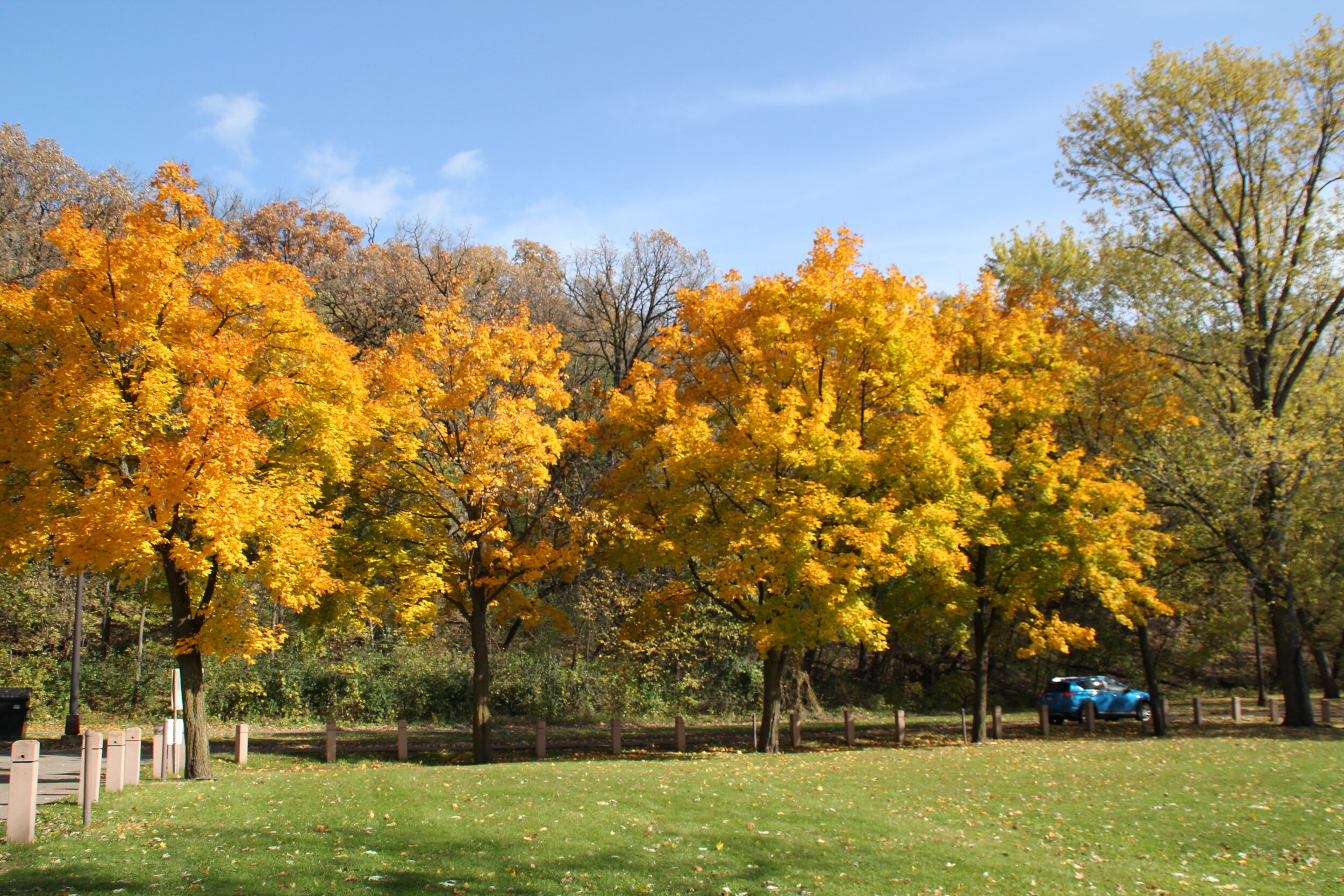Why do leaves change colors in the fall?
And other questions about leaf senescence
By Auste Eigirdas
Photo taken from East River Flats Park in September, 2020.
Around this time of year, deciduous trees turn shades of red, orange, and yellow. But what is the science behind the phenomenon? What we are witnessing is a programmed death: leaves undergoing a tightly organized break down, reabsorption, and storage of nutrients so that the plant can recover as much resources as possible. However, during this terminal stage, leaves must continue photosynthesizing to produce the energy necessary for this process.
As the days shorten, the decrease in daylight initiates a stop in the production of chlorophyll and the already existing chlorophyll within the plant cells slowly begins to degrade. This loss causes leaves to turn yellow, exemplified best by our birch and aspen. During this terminal stage, leaves become more susceptible to light stress, which occurs when the plant cell absorbs more light than it is able to use. To combat light stress, leaves will produce anthocyanin pigments that provides a "red umbrella" to reduce light absorption. The range of leaf colors we see in the fall, such as brown, orange, and even purple, is the result of anthocyanin pigment synthesis.
Fall colors at Hidden Falls Regional Park in Saint Paul. October 2019.
Although autumn leaf senescence is initiated by photoperiod alone, temperature may affect the rate of the process. In the context of climate change, warmer falls may slow the senescence process while an early frost could expedite it. Within urban areas, street trees have crowns entirely exposed to light, which increases anthocyanin synthesis and consequently the production of red leaves; however, other stressors, such as poor, compacted soil, may also be contributing factors.
Why are red leaves so short-lived? Tress are equipped with "sun leaves," which produce the anthocyanin pigments, and "shade leaves," which only lose chlorophyll. Sun leaves are able to produce abscission layers faster, and therefore will drop first; which is why especially following a windy day, we mostly only see yellow trees.


